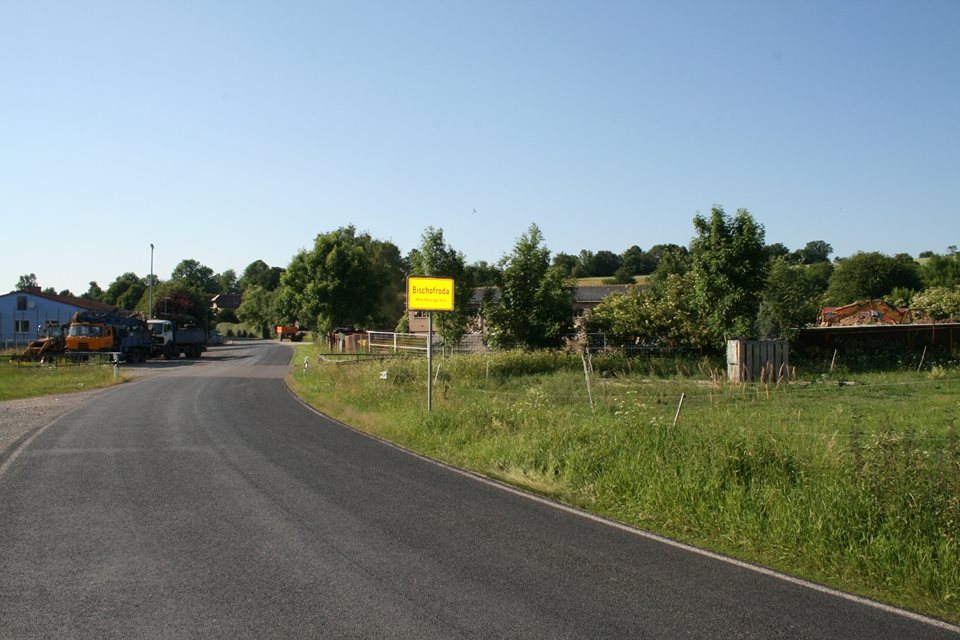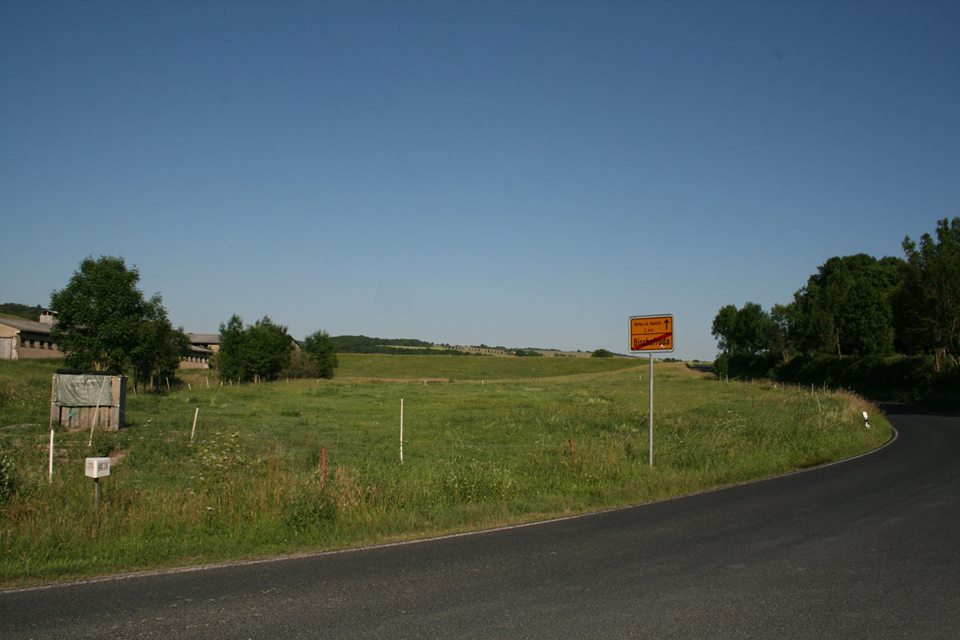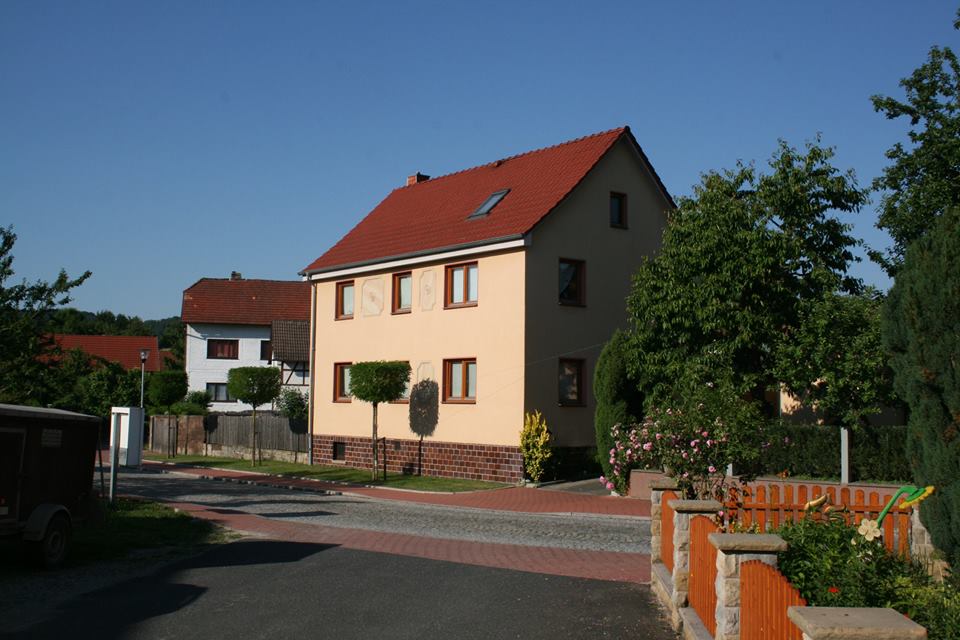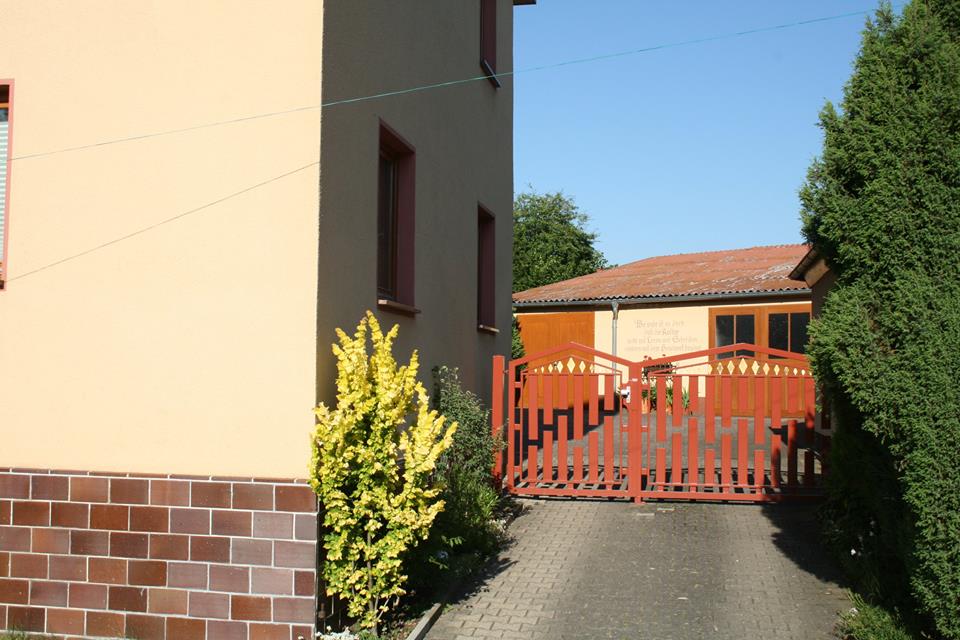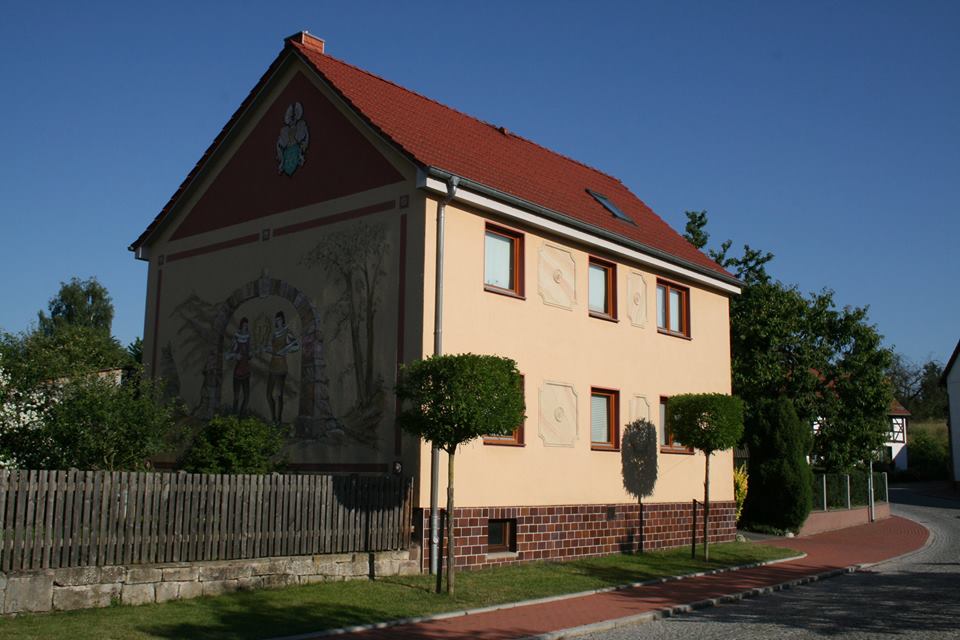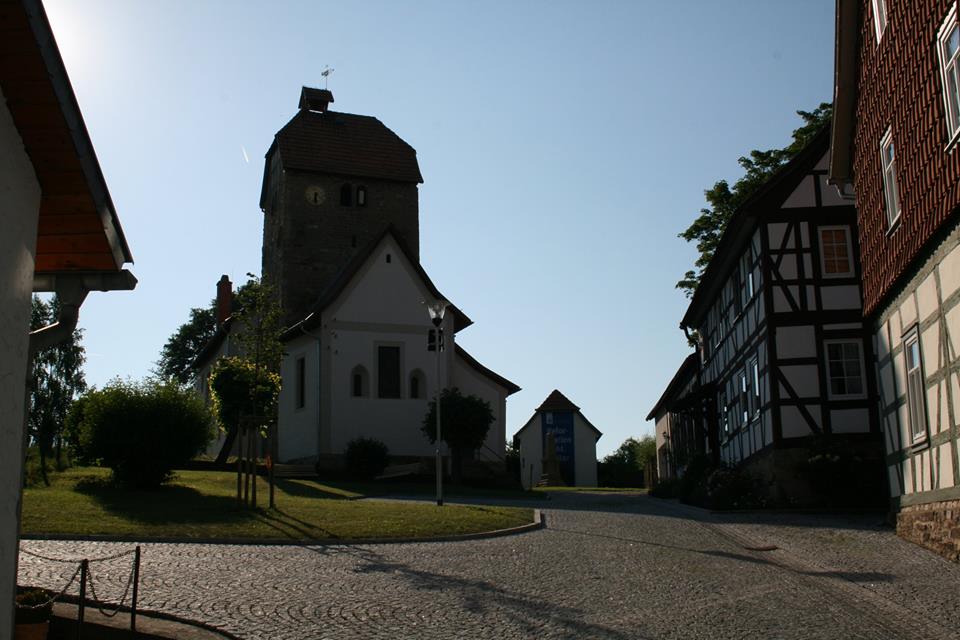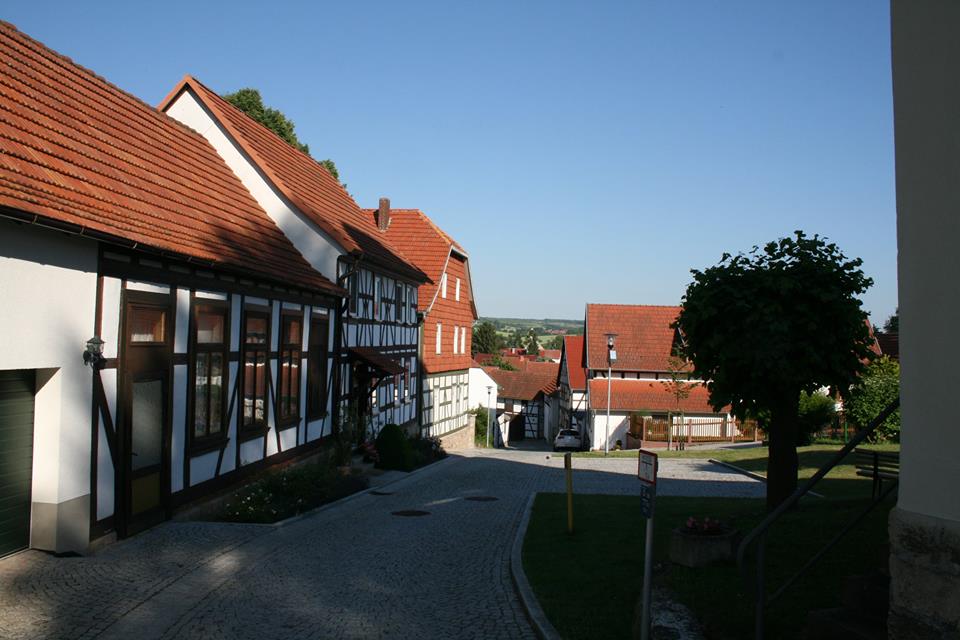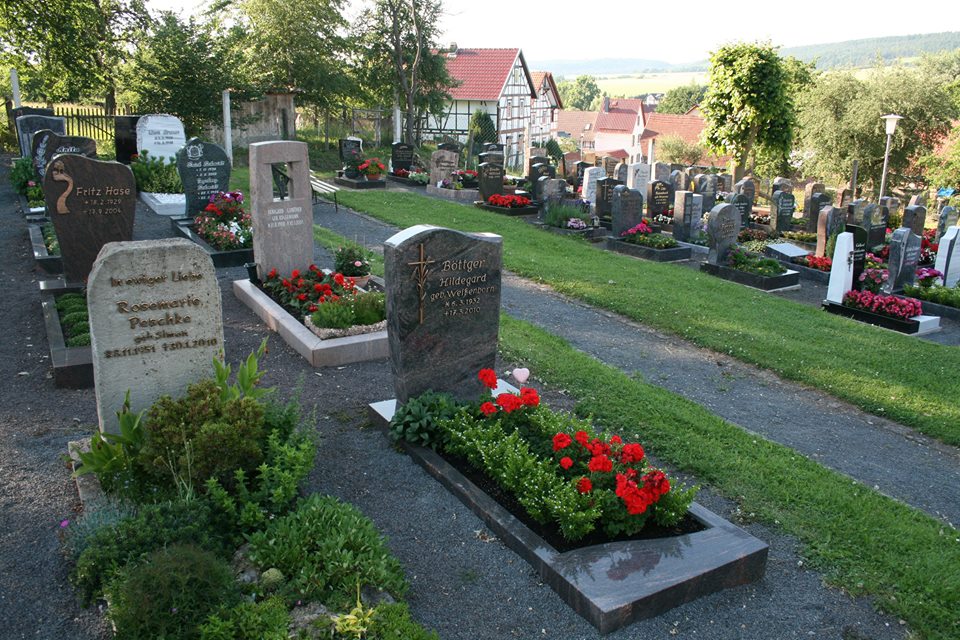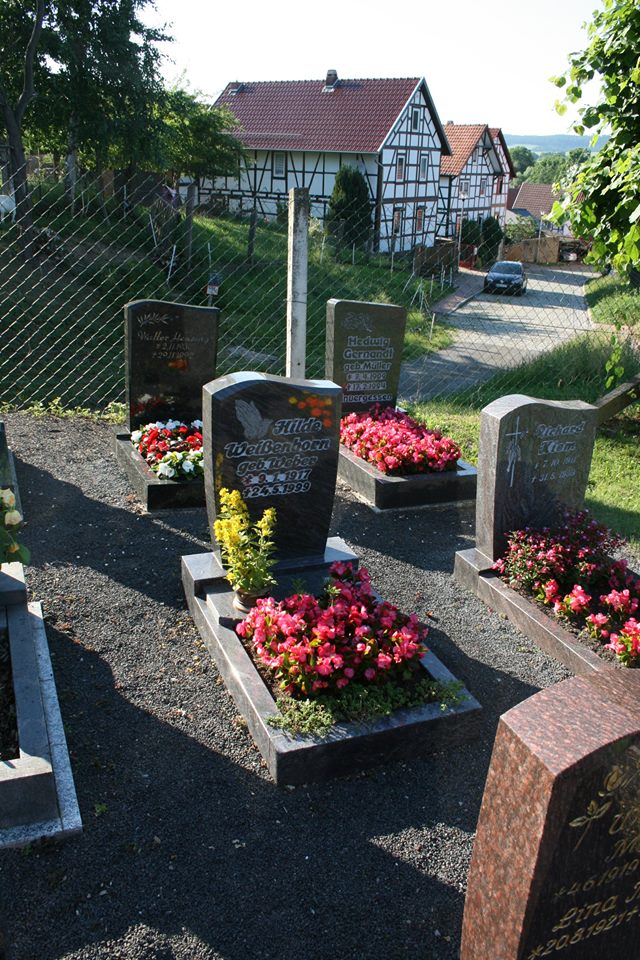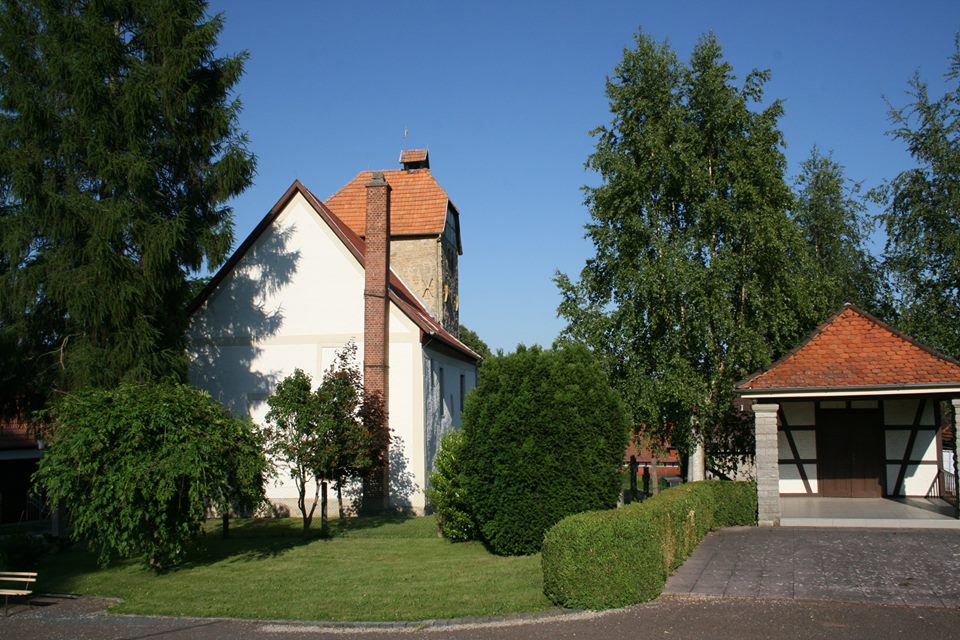36. Reporting on my June 2017 search for Weis(s)enborns: monday afternoon and evening.
Posted on Facebook on 7 July 2017. After lunch break I walked the two streets from the Kirchliches Archiv to the Stadtarchiv of Mühlhausen. As dr. Antje Schloms, the lady with whom I had an appointment, was not yet there, I was given a short tour by the receptionist through part of the very impressive Rathaus. I was shown the huge hall where the rulers of the city had met since the Middle Ages, with its roof in the shape of the upside down hull of a ship. It had been painted over in recent times - the 18th century - but here and there the original images from the Middle Ages were visible again. A (my estimates) 6 by 3 meter painting showed reformer Thomas Müntzer preaching to the people. The receptionist said that not a single image of Müntzer had survived. After Müntzer was beheaded in 1525 in front of the city wall of Mühlhausen, everything that reminded of him had been destroyed. He was as learned and influential in his day as Luther, but had actively taken the side of the common people in their rebellion. That was an unpardonable offence in the eyes of the mighty. Mrs. Schloms and her very kind co-worker had already looked up and made available so many interesting documents that I was busy reading and writing for the whole afternoon. I even had 157 Mb of scanned images sent to my home over the internet, as I was hard up for time. The entries for Weißenborns in the "Neubürgerverzeichnis" of Mühlhausen, the book in which all persons who became new citizens had been registered, were the most interesting clues for tracing how our family name has spread since it was adopted by our decisive forebear(s). The book contained the following entries. Jonas, from Mihla in 1574 Lorenz, in 1596 Hans, from Flarchheim in 1633-1634 Michael, from Körner in 1684 Georg Heinrich, "Leinewebergesell" (linen weaver journeyman) from Seebach in 1790 Kaspar, linen weaver from Seebach in 1795 These entries point to villages where Weißenborns lived before they became city dwellers. I agree with John Theibault who remarked in chapter 7 of his doctoral thesis that the industrial revolution started in 1650 rather than 1850, if industrial revolution is understood to mean localized mass production, as opposed to individual people making things at their own home. After the 30 Years War, in 1648, many people had lost everything and the countryside had been plundered bare, in particular in Hesse-Kassel where many Weißenborns lived. In the outskirts of the cities people were hired to do factory-like, low-skilled work. But long before 1650 industrious young men had moved to the cities to learn a trade, or apply their trade in a different environment. It will still take several days to sort out all data from Mühlhausen that I have recorded and was sent. This was the harvest of only the first of the 10 days away from home, in which I could roam freely over Weißenborn country. I had not yet had enough for one day. After eating a rich salad and spagetti at a tiny takeaway in Mihla I drove the few kilometers to Bischofroda. When I took the first two of the attached pictures at the village entrance, a distant voice behind me asked if I was taking a picture of her house? I had an interesting conversation, and learned that the most beautifully decorated house of the village belonged to Günter and Rosa Weißenborn. Günter was, of course, a retired painter. The couple wasn't home that night, but I have spent most of Thursday evening with them, to be recounted later. The other attached pictures show the church of Bischofroda and the two Weißenborn graves. These Weißenborns as well as Günter are relatives of Kimberly, Jeffrey, Jane, Cary, Sharon and all other facebook friends who descend from Johann Valentin Weißenborn, who was born in Bischofroda on 16 December 1790, and baptised there three days later. He was the son of the "Obermüller", the miller on the upper mill. I know who his father, grandfather and probably also his great-grandfather were. To be recounted later.
